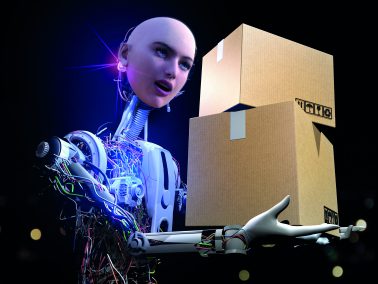Technology trends impacting workplace safety
 Technology is always advancing, with each day seeming to bring new inventions and discoveries. It is inevitable that some of the new technologies will have an impact on workplace safety. We are constantly developing new and innovative ways to improve health and safety at work as a result.
Technology is always advancing, with each day seeming to bring new inventions and discoveries. It is inevitable that some of the new technologies will have an impact on workplace safety. We are constantly developing new and innovative ways to improve health and safety at work as a result.
The fourth industrial revolution
Rapid changes have been identified as industrial revolutions throughout periods of modern history. New technologies transformed how people worked when first machinery, then mass production lines and computers came into effect. Therefore, with technology transforming the workplace, it appears we are now on the brink of a fourth industrial revolution.
As in the past, each new technology creates health and safety issues. The internet has brought both businesses and individuals many opportunities, but also leaves them vulnerable to hacking. In the future, artificial intelligence and robotics could combine in a new type of worker. This will create a whole new range of health and safety issues on how humans could be protected from malfunctioning robots! Once purely the domain of science fiction writers, these issues could have implications for future health and safety much sooner than we think.
Improved health and safety
Although workplace safety remains important, focus is shifting to long-term health as more is understood about the implications of workplaces. At first glance the deadliest hazards may not be apparent, dust-induced illnesses for example. Technology can be used to track accumulative hazards such as these, providing a real-time alert if dangerous levels are imminent.
New technologies and how they improve health and safety at work
Technologies which are already being used as part of health and safety strategies include:
- Check-in technology. Using technology to monitor workers’ whereabouts and attendance is a time consuming task when carried out manually. Doing this digitally can save a vast amount of time. It is an easy way to monitor who is on the premises or who is missing in a fire evacuation. There is even technology which can detect a fall, sending an alert to raise an alarm.
- Drones. A sometimes controversial form of technology, drones are gaining a place on work sites. A drone can access areas too small, hot or cold for humans, collecting data without a risk to human life.
- AI-Safe. Artificial intelligence can provide instant knowledge of unsafe practices. If located above doorways, it can check if the worker is wearing the correct PPE and restrict access if not.
- 3D technology. Often used to enhance experiences such as cinemas, 3D technology can also be used as a workplace training method. This is particularly valuable in dangerous occupations, allowing them to initially train with no physical risk.
- Autonomous vehicles. These can remove the human error of driving, making decisions which can avoid collisions.
Workplaces are going to see some drastic changes in the next few years. This will create exciting opportunities for health and safety managers but new challenges and risks will have to be addressed. These new ways of working could be here in a very short space of time.
